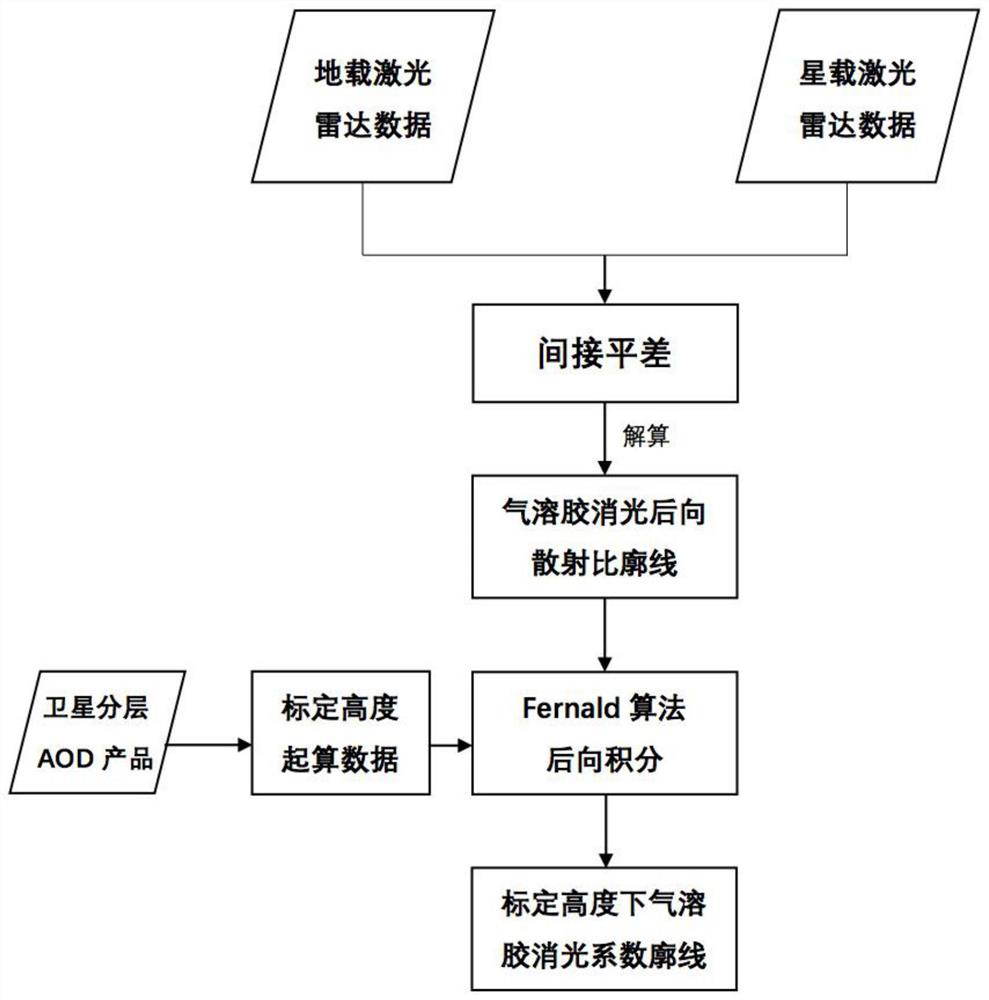Ground-based laser radar aerosol inversion method and system based on laser radar satellite
A laser radar and aerosol technology, applied in the field of atmospheric remote sensing, can solve the problems of aerosol inversion error, aerosol extinction coefficient inversion error, etc., and achieve the effect of reducing restrictions, good accuracy and strong stability
- Summary
- Abstract
- Description
- Claims
- Application Information
AI Technical Summary
Problems solved by technology
Method used
Image
Examples
Embodiment Construction
[0028] The technical solution of the present invention will be further described below in conjunction with the accompanying drawings.
[0029] see figure 1 , the embodiment of the present invention provides a ground-based lidar aerosol inversion method based on lidar satellites, using the AOD layered products of lidar satellites to calculate atmospheric parameters at a certain height to improve accuracy, including the following steps:
[0030] Step 1, based on the indirect adjustment, using the equations measured by the ground-based lidar and the spaceborne lidar to solve the profile of the aerosol extinction backscatter ratio in one cycle;
[0031] The preferred implementation of this step is as follows:
[0032] Set up monitoring stations under the passing area of the spaceborne lidar, and conduct ground-based lidar observations during the satellite transit time period, so as to obtain multiple ground-based lidar equations and a spaceborne lidar equation at the height r f...
PUM
 Login to View More
Login to View More Abstract
Description
Claims
Application Information
 Login to View More
Login to View More - R&D
- Intellectual Property
- Life Sciences
- Materials
- Tech Scout
- Unparalleled Data Quality
- Higher Quality Content
- 60% Fewer Hallucinations
Browse by: Latest US Patents, China's latest patents, Technical Efficacy Thesaurus, Application Domain, Technology Topic, Popular Technical Reports.
© 2025 PatSnap. All rights reserved.Legal|Privacy policy|Modern Slavery Act Transparency Statement|Sitemap|About US| Contact US: help@patsnap.com



